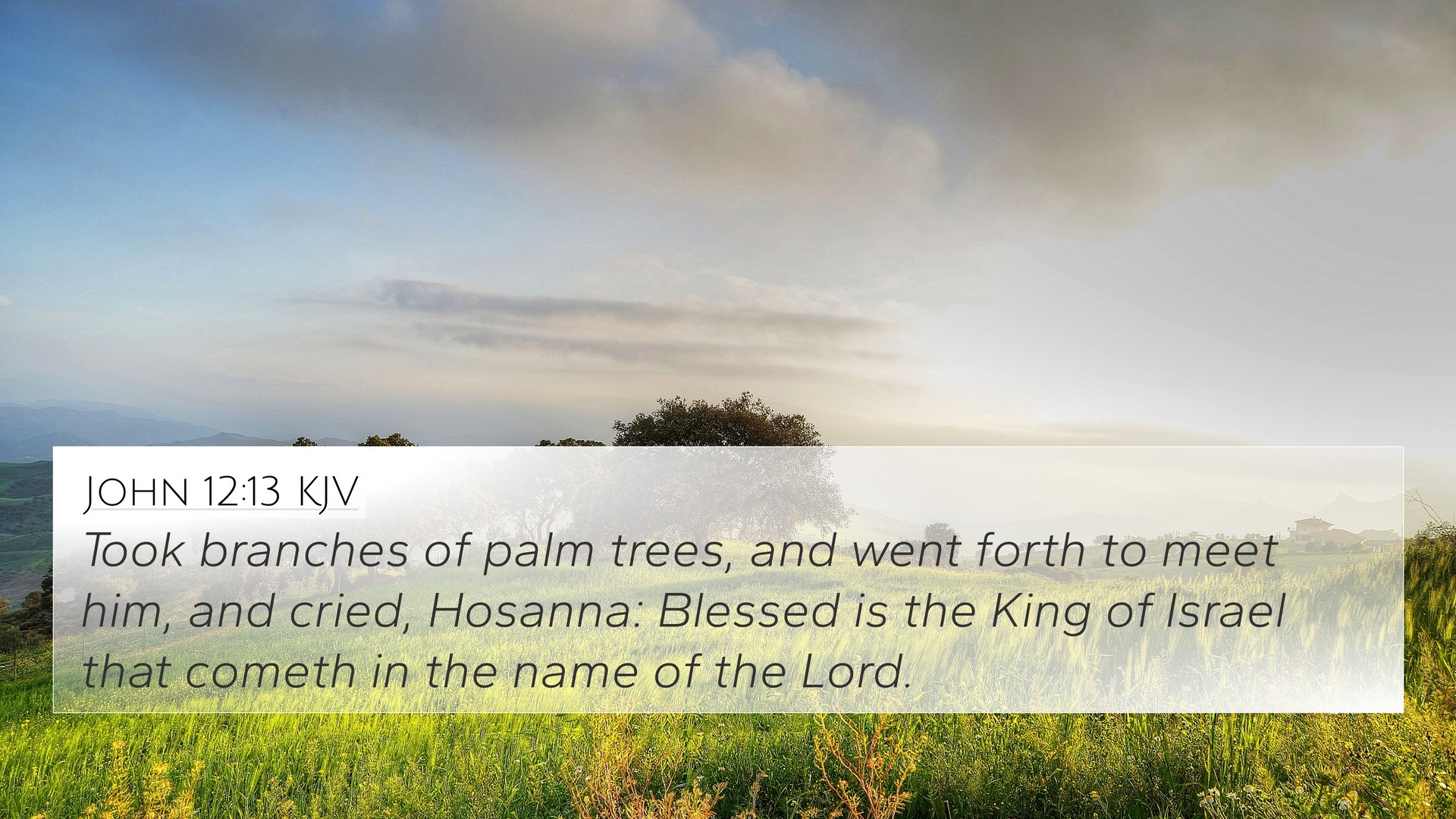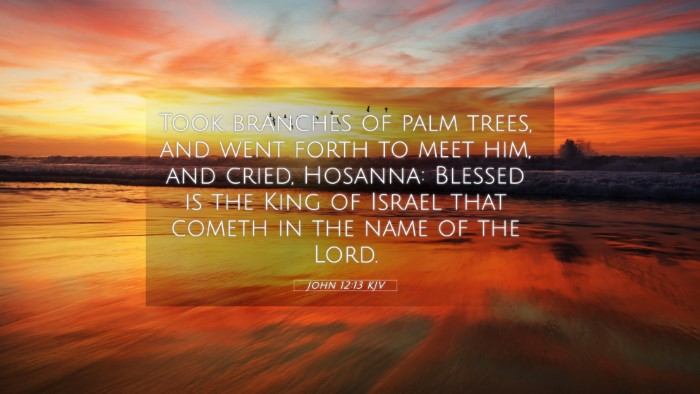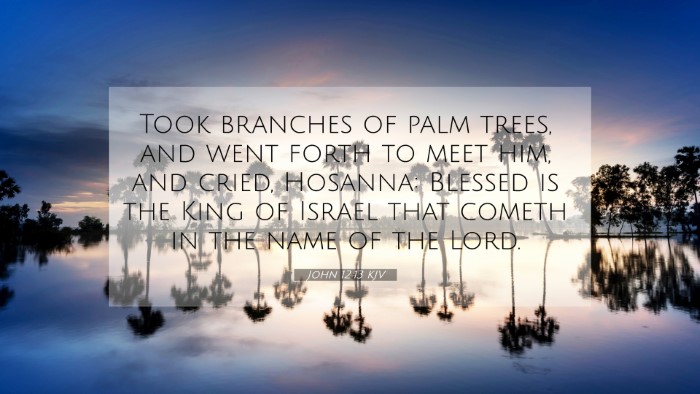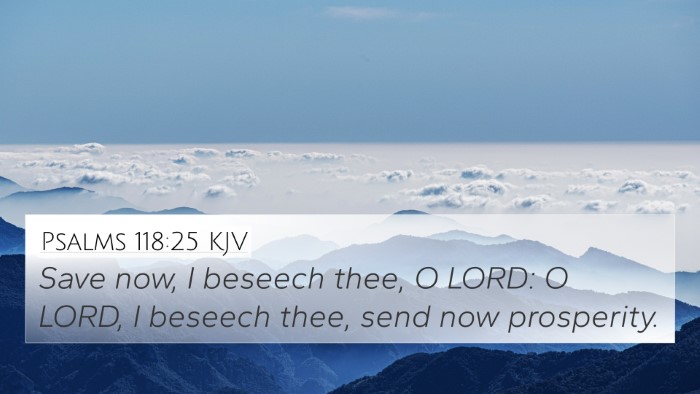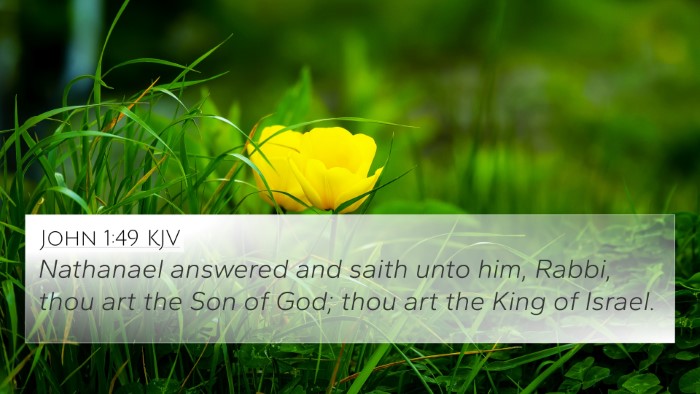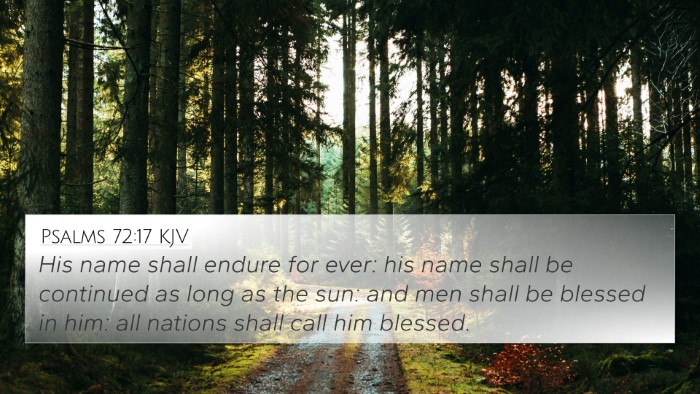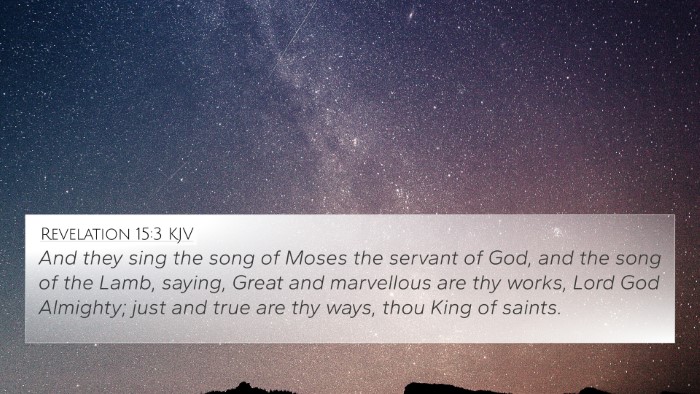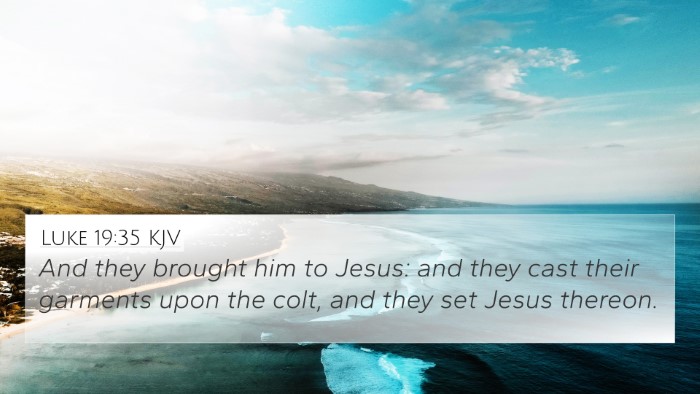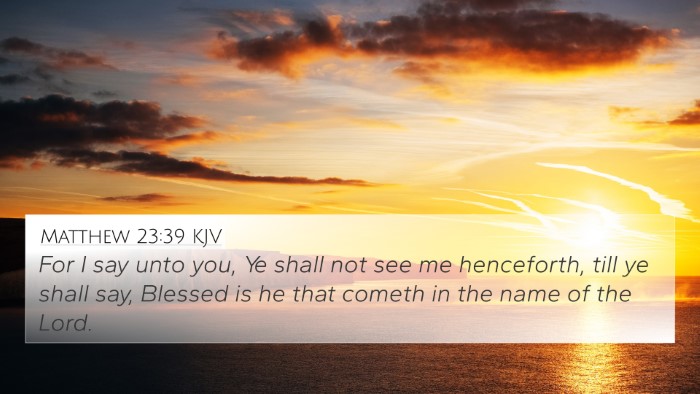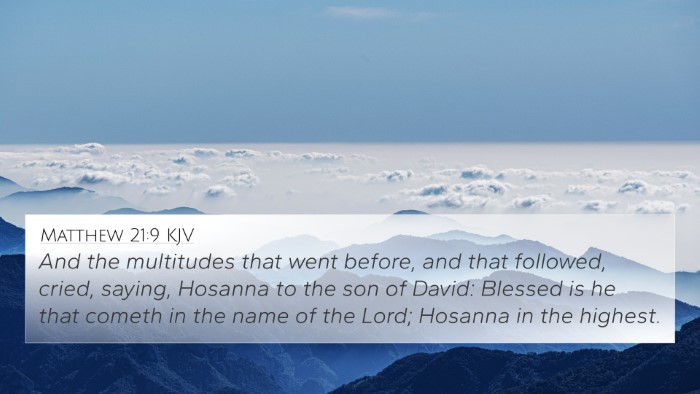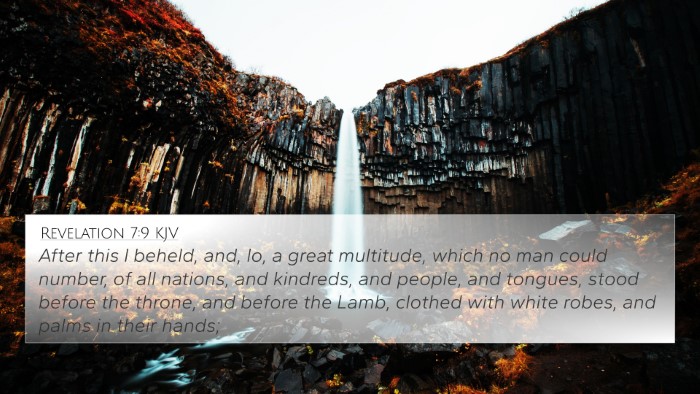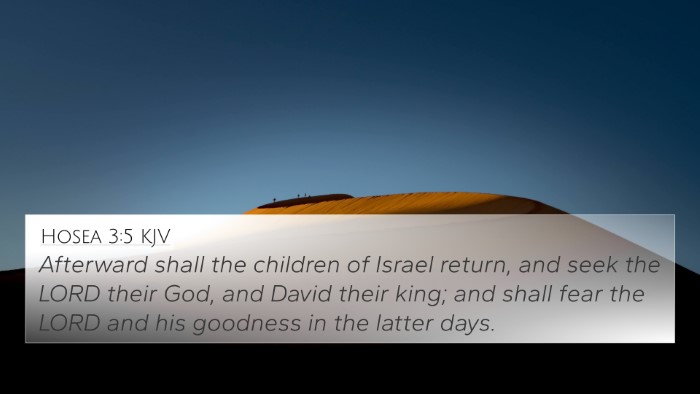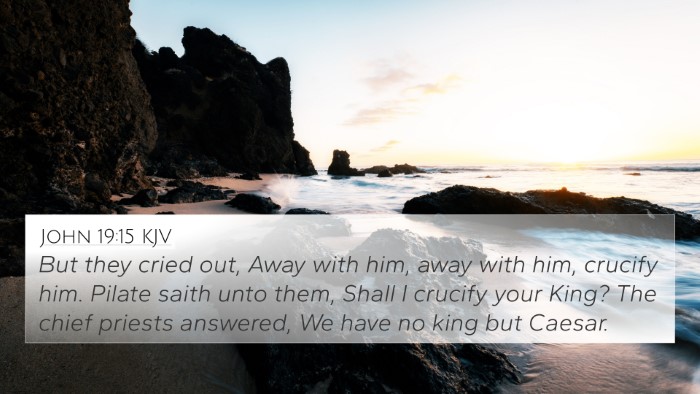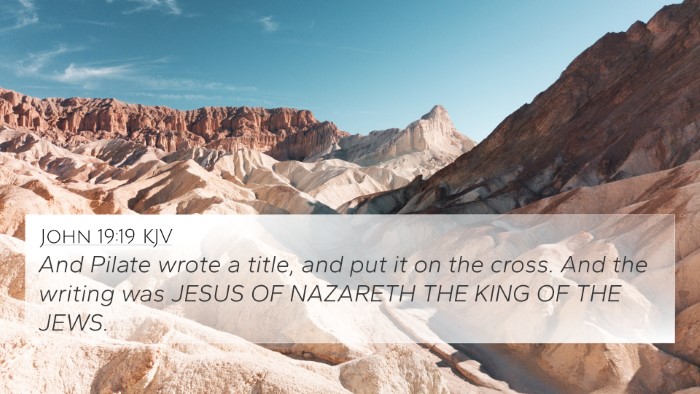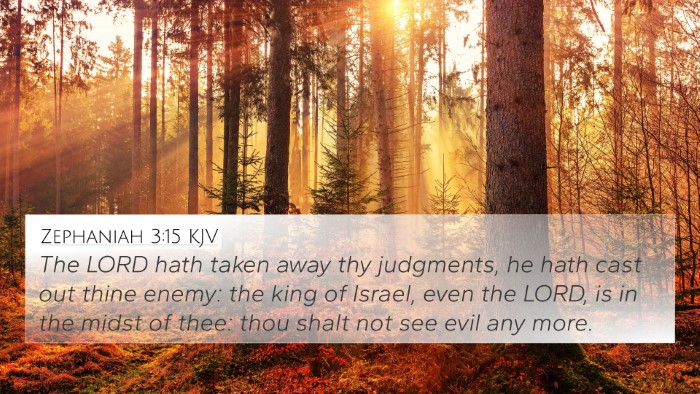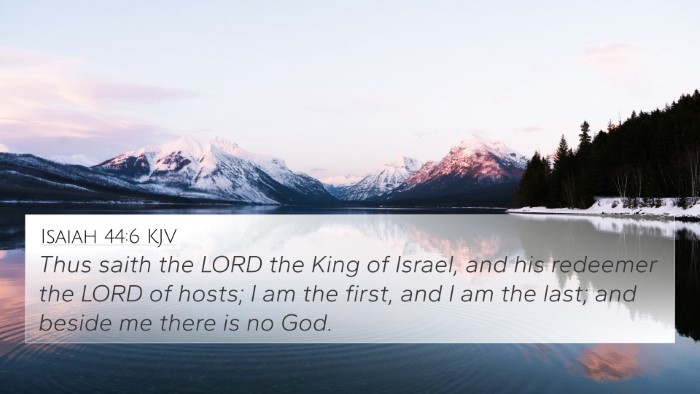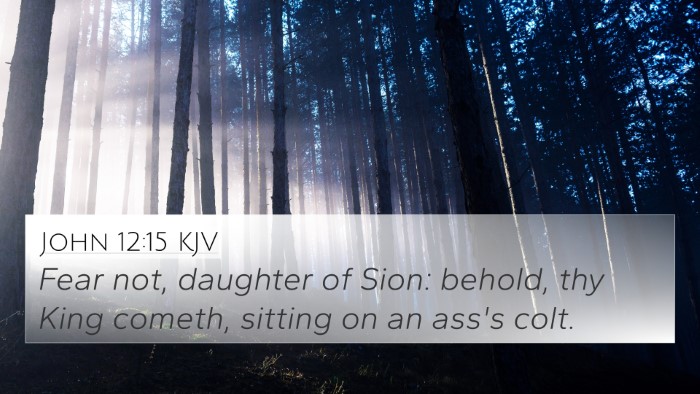Understanding John 12:13
John 12:13 reads:
“Took branches of palm trees, and went forth to meet him, and cried, 'Hosanna: Blessed is the King of Israel that cometh in the name of the Lord.'” (John 12:13, KJV)
This verse captures a significant moment in the New Testament, where the people joyously welcome Jesus into Jerusalem. Below, we explore its meaning by drawing on insights from renowned public domain commentaries, including those by Matthew Henry, Albert Barnes, and Adam Clarke. This analysis not only interprets the verse but also connects it to various Biblical themes and cross-references with related scriptures.
Verse Meaning and Context
The entrance of Jesus into Jerusalem on what is now celebrated as Palm Sunday marks the climax of His earthly ministry and the fulfillment of Old Testament prophecies.
- Historical Context: The event occurs shortly before Jesus’ crucifixion, setting the stage for the Passion narrative. The people’s proclamation of “Hosanna,” a word meaning “save us,” indicates their recognition of Jesus as a messianic figure.
- Theological Significance: This moment signifies Jesus’ kingship. The palm branches symbolize victory and joy, marking the reception of a king.
Commentary Insights
Matthew Henry
Matthew Henry emphasizes the celebration surrounding Jesus’ entry into Jerusalem, highlighting the prophecy from Zechariah 9:9, which foretells the arrival of the king who comes humbly, riding on a donkey. Henry notes that while the people recognized His lordship, they perhaps did not fully comprehend the nature of His kingdom, expecting a political liberator rather than a spiritual Savior.
Albert Barnes
Albert Barnes draws attention to the use of palm branches, explaining that these were typically used during Jewish festivals to celebrate victory. He connects this entry to Jesus' identity as the Messiah, illustrating that the crowd’s acclamation hints at their messianic expectations, while also foreshadowing the eventual rejection and crucifixion of Jesus that would follow such jubilation.
Adam Clarke
Adam Clarke provides a detailed examination of the term “Hosanna,” noting its roots in Psalm 118:25-26, where the phrase expresses a plea for salvation. Clarke argues that by using this term, the people are echoing their hope in Jesus as the one who brings deliverance, albeit a deliverance that they may have misinterpreted.
Connections Between Bible Verses
This verse not only stands independently but also resonates deeply within the context of a broader theological narrative. Below are some significant Bible verse cross-references that relate to John 12:13:
- Matthew 21:8-9: Both Gospels narrate the triumphal entry, emphasizing the crowd’s enthusiasm.
- Luke 19:38-40: Echoes the acclamation of Jesus and His response to the Pharisees’ objections.
- Mark 11:9-10: Highlights the messianic hope of the crowd as they celebrate His arrival.
- Zechariah 9:9: The Old Testament prophecy fulfilling the expectation of the humble king.
- Psalm 118:25-26: The source of the crowd’s proclamation, linking it to the celebration of God’s deliverance.
- Isaiah 62:11: Prophetic assurance of salvation and the coming of the Savior.
- Revelation 7:9: The ultimate celebration of victory involving palm branches, connecting the themes of triumph and worship.
Thematic Connections
Utilizing tools for Bible cross-referencing, we can explore the interconnected themes of kingship, salvation, and the fulfillment of prophecy as seen in this verse:
- Kingship: Jesus is recognized as the King, fulfilling His role as the promised Messiah.
- Salvation: “Hosanna” encapsulates a cry for help, linking the crowd's plea for deliverance with Jesus’ mission.
- Fulfillment of Prophecy: Each reference connects back to earlier scriptures, showcasing the continuity in God’s plan from the Old Testament to the New Testament.
Cross-Referencing Bible Texts
The practice of cross-referencing Bible texts, particularly within the context of John 12:13, serves to deepen our understanding of its implications. Here are some methods for effective Bible cross-referencing:
- Utilizing a Bible Concordance: This tool allows readers to locate verses based on keywords, aiding in the discovery of related scriptures.
- Employing a Bible Cross-Reference Guide: These guides provide thematic connections and parallels for deeper studies.
- Exploring Bible Chain References: This method links verses based on themes and doctrines, enriching the study experience.
- Engaging in Cross-Referencing Bible Study Methods: This approach encourages readers to discern connections across different books of the Bible.
Conclusion
John 12:13 encapsulates a pivotal moment in the narrative of Jesus’ life, touching on themes of worship, prophecy, and the acknowledgment of Jesus’ kingly identity. Through comparative Bible verse analysis and thematic exploration, the understanding of this verse expands significantly, illuminating its relevance in both historical and contemporary contexts. As believers engage with this scripture and its related verses, they find an enriched understanding of the overarching story of salvation and God’s redemptive plan.
